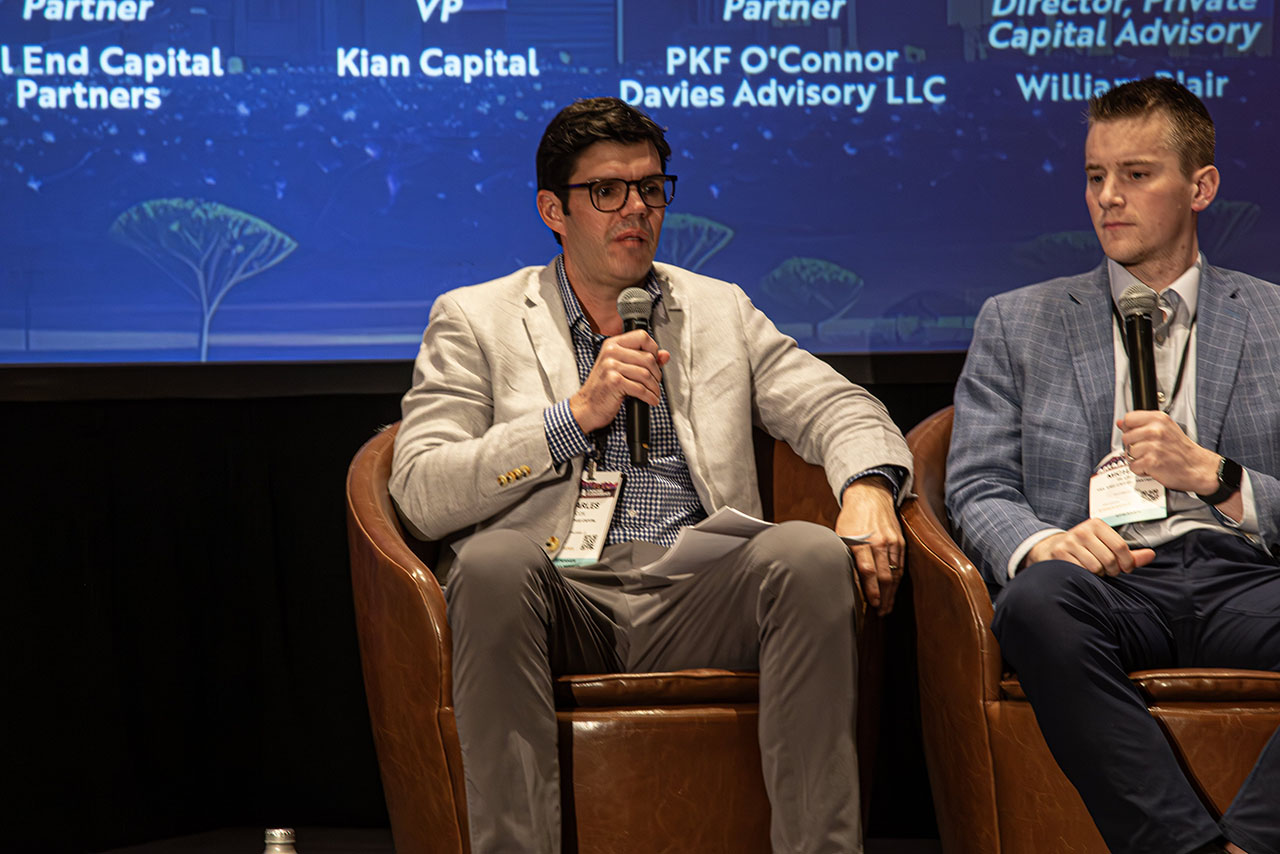
MP DEK: During one of the panels at the recent AM&AA 2025 Winter Conference, experts explored the pros and cons of the $30 billion continuation vehicle space for general partners, limited partners, and secondary investors.
The recent AM&AA 2025 Winter Conference, held in Scottsdale, Arizona, featured an array of educational offerings and networking opportunities, providing sponsors, attendees, and speakers with valuable face-to-face time to discuss the industry’s hottest topics.
Among the slate of educational courses, the “Navigating the World of Continuation Vehicles” panel offered insight into the expanding continuation vehicle (CV) market. During this session, panelists explored the pros and cons of continuation vehicles for general partners, limited partners, and secondary investors.
The session kicked off with an introduction of the panel of experts, led by Moderator Charles Cox, Partner & Head of Business Development with LongueVue Capital; Michael Blume, Partner with Tail End Capital Partners; Ulrich Erasmus, VP with Kian Capital Partners; Noam Hirschberger, Partner with PKF O’Connor Davies; Tom Marking, Director with William Blair; and Jamie Smith, Partner with Forvis Mazars.
Marking kicked off the panel by describing Continuation Vehicles (CVs) and their importance to the marketplace. CVs allow General Partners (GPs) to transfer high-performing assets from older funds to newly created ones, providing liquidity to Limited Partners (LPs), while enabling further growth.
“At a high level, in a continuation vehicle transaction, what a sponsor is doing is going out and raising a new vehicle, which it manages… it serves as the GP to that vehicle,” explained Marking. “That vehicle will be backed by new investors. That vehicle will then acquire one or multiple assets from the GP’s existing funds, thereby providing liquidity to LPs in that underlying fund. And in almost all instances, you’re actually providing an option for liquidity.”
Transparency and conflict of interest management are critical to CVs, continued the panelists, as the U.S. Securities and Exchange Commission (SEC), as noted by Hirschberger, “requires fairness opinions for GP-led transactions, emphasizing the need for rigorous third-party valuations.”
And when it comes to selecting the right deals in today’s competitive marketplace, Marking explained his company’s strategic approach, “The question we get when we profile a deal with a prospective investor is… where does the GP hold the asset? What multiple is that? Then the buyer will go off and do work to validate whether or not that’s a fair price, and how much upside they see left in the asset. That will ultimately determine where they shake out.”
When asked about tax implications and issues that arise with GPs and LPs in a continuation vehicle, Smith explained, “It’s a big deal, and its full on financial and tax diligence scope of work. Obviously you have to come in and look at the asset, but then also there’s structures above, blockers and all kinds of different things that need to occur. So, there’s a lot of work pre-transaction with regards to checking all the blocks, and making sure there are no adverse tax consequences.”
In assessing the current state of the CV market, Cox noted that 35% of private equity portfolio companies are five years within the holding period or longer, which he feels may drive more activity in single asset continuation vehicles, also, maybe even zombie funds.
“We get this question a lot from investors,” said Blume. “How big can the CV market actually be? We have seen it grow from $3 billion, six years ago, to $30 billion, and this is just the single asset market… $30 billion last year, so 10 times growth in six years is massive, and how much more can it grow? We are focused on the lower middle market, where we think there is still a massive amount of under-penetration. I think the estimate is, two-thirds of lower middle market GPs still have yet to do their first continuation vehicle, so I think there’s a lot of room to run there.”
When asked about the drivers and constraints for the CV market that may be seen in the next year going forward or five years out, Cox noted the single-asset CV market having grown nearly tenfold in just six years (having reached $30 billion in 2024).
“There’s about one-and-a-half years of dry powder relative to annual supply in the secondary market,” noted Marking.
Blume added, “One constraint for us is, we’ve been just trying to evangelize the CV product to sort of the lower end of the middle market for the last several years… even working with independent sponsors who don’t have committed capital funds, but raise money deal by deal.”
“I think we probably hit record volume in 2024, and there are no real signs of that slowing down,” added Erasmus. “Kian Capital is an SBIC fund [Small Business Investment Company], and so I think we were the first SBIC fund to do a single asset CV. Other SBIC funds that have crown jewel assets, where they want to continue to support the business, but have maybe run out of runway in their existing fund, the floodgates could potentially open up with that sort of fund type, doing continuation fund transactions.”
Hirschberger noted, “I’m seeing clients coming to me and needing valuation assistance. I imagine that there is going to be also more just transaction advisory QAV [Quality Assurance Validation] type work as well. We are all obviously paying attention to this trend, and are just going to continue pursuing it.”
Smith closed the discussion by stating, “Nine months ago, I’d never heard of a continuation fund. So, now we are doing several, and I think it will continue.”
Ready to be part of the conversation?
Ready to be part of the conversation? Join us at Summer Conference for more discussions like this one.





